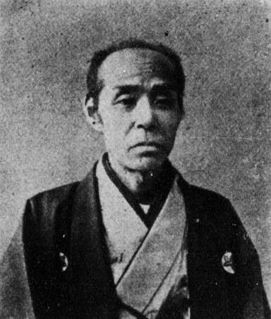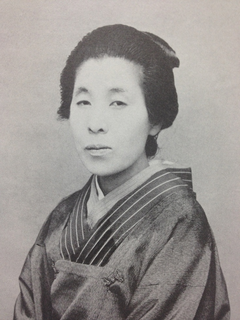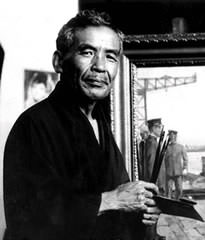 W
WAn Imperial Household Artist was an artist who was officially appointed by the Imperial Household Agency of Japan to create works of art for the Tokyo Imperial Palace and other imperial residences.
 W
WAkatsuka Jitoku was a Japanese artist. He created Japanese lacquerware based on the Maki-e style. Jitoku attended the Japan Art Academy.
 W
WFumio Asakura was a Western-style Japanese sculptor, known as the father of modern Japanese sculpture and referred to as the "Rodin of Japan". He was a prolific artist, and his work spanned the Meiji, Taishō, and Shōwa periods of Japanese history.
 W
WHirakushi Denchū or Hiragushi Denchū was a Japanese sculptor. He was noted for his traditional Japanese wood sculptures, especially realistically rendered painted wooden portrait sculptures, often incorporating Buddhist themes. He was appointed to the Imperial Art Academy in 1937 and in 1944 was appointed an Imperial Household Artist. He was named a Person of Cultural Merit in 1954 and in 1962 was awarded the Order of Cultural Merit.
 W
WFujishima Takeji was a Japanese painter, noted for his work in developing Romanticism and impressionism within the yōga (Western-style) art movement in late 19th- and early 20th-century Japanese painting. In his later years, he was influenced by the Art Nouveau movement.
 W
WHashimoto Gahō was a Japanese painter, one of the last to paint in the style of the Kanō school. He was one of the first five painters to be appointed as a Imperial Household Artist and was one of the most authoritative painters in Japan at that time.
 W
WHashimoto Kansetsu was a painter of nihonga who was active in the Kyoto art world during the Showa and Taisho eras.
 W
WShodo Hirata (平田松堂) was a Japanese painter who was active from the Meiji era to the Showa era, mainly in public exhibitions. He studied under Kawai Gyokudo and was particularly adept at bird and flower painting.
 W
WImao Keinen was a Japanese painter and print designer of the late 19th and early 20th centuries, part of the shin-hanga movement. In 1904 he was appointed as an Imperial Household Artist.
 W
WItaya Hazan was a Japanese artist widely considered a pioneer of modern Japanese ceramics.
 W
WKiyokata Kaburaki was the art-name of a Nihonga artist and the leading master of the bijin-ga genre in the Taishō and Shōwa eras. His legal name was Kaburaki Ken'ichi. The artist himself used the reading "Kaburaki", but many Western sources transliterate it as "Kaburagi".
 W
WKawai Gyokudō was the pseudonym of a Japanese painter in the nihonga school, active from Meiji through Shōwa period Japan. His real name was Kawai Yoshisaburō.
 W
WKokei Kobayashi was a Japanese Nihonga painter.
 W
WKōno Bairei was a Japanese painter, book illustrator, and art teacher. He was born and lived in Kyoto. He was a member of the Ukiyo-e school and was a master of kacho-e painting in the Meiji period of Japan.
 W
WMiyagawa (Makuzu) Kōzan (宮川香山) (1842–1916) was a Japanese ceramist. He was appointed artist to the Japanese Imperial household and was one of the major potters of the Meiji Era. From 1876 to 1913, Kōzan won prizes at 51 exhibitions, including the World's fair and the National Industrial Exhibition. His name was originally Miyagawa Toranosuke.
 W
WViscount Kuroda Seiki was a Japanese painter and teacher, noted for bringing Western art theory and practice to a wide Japanese audience. He was among the leaders of the yōga movement in late 19th and early 20th-century Japanese painting, and has come to be remembered in Japan as "the father of Western-style painting."
 W
WSeison Maeda was the art-name of a nihonga painter in the Taishō and Shōwa periods of Japan. His legal name was Maeda Renzō. He is considered one of the greatest contemporary Japanese painters, and one of the leaders of the Nihonga movement.
 W
WNamikawa Yasuyuki (1845–1927) — original family name Takaoka — was a Japanese cloisonné artist. His work was highly sought after in his own lifetime and is held in several collections today. He and Namikawa Sōsuke were the most famous cloisonné artists of the 1890 to 1910 period, known as the "Golden age" of Japanese enamels. From 1875 to 1915, he won prizes at 51 exhibitions, including at world's fairs and at Japan's National Industrial Exhibition. For his work he was appointed an Imperial Household Artist in 1896. He sometimes signed his pieces Kyoto Namikawa.
 W
WOgawa Kazumasa , also known as Ogawa Kazuma or Ogawa Isshin, was a Japanese photographer, printer and publisher who was a pioneer in photomechanical printing and photography in the Meiji era.
 W
WOkada Saburōsuke was a Japanese painter in the Yōga style and a Professor at the "Tōkyō Bijutsu Gakkō" ; precursor of the Tokyo University of the Arts.
 W
WShibata Zeshin was a Japanese lacquer painter and print artist of the late Edo period and early Meiji era. He has been called "Japan's greatest lacquerer", but his reputation as painter and print artist is more complex: In Japan, he is known as both too modern, a panderer to the Westernization movement, and also an overly conservative traditionalist who did nothing to stand out from his contemporaries. Despite holding this complicated reputation in Japan, Zeshin has come to be well regarded and much studied among the art world of the West, in Britain and the United States in particular.
 W
WKanzan Shimomura was the pseudonym of a nihonga painter in Meiji through to the early Shōwa period Japan. His real name was Shimomura Seizaburō.
 W
WNoguchi Shohin was a Japanese painter.
 W
WKomuro Suiun is the pseudonym of a Japanese nihonga painter who worked mainly in the nanga style, active from the Meiji period (1868–1912) to the Shōwa period (1926–1989).
 W
WTakamura Kōun was a Japanese sculptor who exerted himself for the modernization of wood carving and a professor of Tokyo School of Fine Arts, who dedicated himself to the education of the future generations.
 W
WTakeuchi Seihō was a Japanese painter of the nihonga genre, active from the Meiji through the early Shōwa period. One of the founders of nihonga, his works spanned half a century and he was regarded as master of the prewar Kyoto circle of painters. His real name was Takeuchi Tsunekichi.
 W
WTomioka Tessai was the pseudonym for a painter and calligrapher in imperial Japan. He is regarded as the last major artist in the Bunjinga tradition and one of the first major artists of the Nihonga style. His real name was Yusuke, which he later changed to Hyakuren.
 W
WUemura Shōen was the pseudonym of an artist in Meiji, Taishō and early Shōwa period Japanese painting. Her real name was Uemura Tsune. Shōen was known primarily for her bijin-ga, or paintings of beautiful women, in the nihonga style, although she produced numerous works on historical themes and traditional subjects. Shōen is considered a major innovator in the bijin-ga genre despite the fact she often still used it to depict the traditional beauty standards of women. Bijin-ga gained criticism during the Taisho era while Shōen worked due to its lack of evolution to reflect the more modern statuses of women in Japan. During bijin-ga's conception in the Tokugawa, or Edo, period, women were regarded as lower class citizens and the genre often reflected this implication onto its female subjects. Within the Taisho era, women had made several advancements into the Japanese workforce, and artistry specifically was becoming more popular outside of pass times for the elite, which opened way for Shōen's success. Shōen received many awards and forms of recognition during her lifetime within Japan, being the first female recipient of the Order of Culture award, as well as being hired as the Imperial Household's official artist, which had previously only employed one other official woman in the position. In 1949 she died of cancer just a year after receiving the Order of Culture Award.
 W
WRyuzaburo Umehara was a Japanese painter who painted in the Yōga style.
 W
WWada Eisaku was a Japanese painter and luminary of the yōga scene in the late Meiji, Taishō, and Shōwa eras. He was a member of the Japan Art Academy, an Imperial Household Artist, a recipient of the Order of the Sacred Treasure and Order of Culture, an Officier in the Légion d'honneur, and a Person of Cultural Merit.
 W
WYukihiko Yasuda was the pseudonym of a major figure in Taishō and early Shōwa period Japanese painting, and is regarded as one of the founders of the Japanese painting technique of nihonga. His real name was Yasuda Shinzaburō.
 W
WYokoyama Taikan was the art-name of a major figure in pre-World War II Japanese painting. He is notable for helping create the Japanese painting technique of Nihonga.